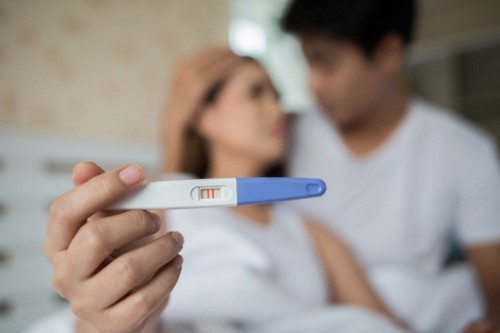Hormonal birth control methods work thanks to a synthetic form of progesterone called progestin, or a combination of progestin and synthetic estrogen.
The level of effectiveness of different methods of contraception can vary depending on many factors.
And that means that they “fail” for various reasons. Let’s take a closer look at each.
Hormonal contraceptives
Such contraceptives prevent pregnancy by:
- Stop ovulation.
- Thinning of the uterine mucosa, which complicates the implantation of the embryo.
- Thickening of cervical mucus, which makes it difficult for sperm to enter the uterus.

Hormonal contraceptives may not work, for one of the following reasons:
- You forgot to take the pill, make the next injection, or change the patch or ring in time.
- You are taking antibiotics.
According to the Centers for Disease Control and Prevention (CDC), contraceptive injection is the most effective form of hormonal birth control. Birth control pills, patches and rings are approximately 91% effective if you follow all the instructions.
Intrauterine devices
An intrauterine device (IUD) is a T-shaped device that a doctor inserts into the base of the uterus. Hormonal IUDs secrete hormones to prevent pregnancy, while copper IUDs alter the way spermatozoa swim. Both types of IUDs also block sperm from entering the uterus.
According to the Association of Reproductive Health Specialists (ARHP), hormonal IUDs are more than 99 percent effective for up to 3 or 5 years, depending on the brand. ARHP also claims that copper IUDs are more than 99 percent effective for up to 12 years. But a week may pass when the hormonal IUDs begin to release hormones, so there are pretty good chances of getting pregnant during the first week after placing the device.
In addition, both hormonal and copper IUDs can shift and fall out of the cervix, which also makes pregnancy possible.
Barrier contraceptives
Barrier methods of contraception act by physically blocking sperm from getting into the egg. These methods include:
- Male condoms.
- Female condoms.
- Aperture
- Spermicides.
- Sponge.
The effectiveness of barrier methods varies. According to the CDC, barrier methods are only 12–28 percent effective. Diaphragms and male condoms are the most effective of these methods, while spermicide is least able to prevent pregnancy.

Barrier contraceptives usually do not work due to the user’s fault. In most cases, they are used too late, allowing sperm to enter the vagina. In addition, both types of condoms may tear or burst, and the diaphragm or sponge may slip out of place. Each of these incidents makes it possible for the sperm to enter the egg.
Natural methods of contraception
Most natural contraceptive methods require careful planning and close “collaboration” between both partners. These methods include:
- Interrupted intercourse in which the penis is removed before ejaculation.
- Fertility awareness methods, when a woman monitors her menstrual cycle and temperature to determine the least likely days for pregnancy.
- Lactational amenorrhea, when a woman cannot become pregnant while breastfeeding.
Natural birth control methods often fail. According to the CDC, interruption of intercourse does not protect in 22% of cases, and fertility awareness methods fail in 24% of cases.
The method of lactational amenorrhea (MDA) copes with the task better, and can be effective up to 98 percent of cases, if the following rules are observed:
- Baby under 6 months.
- A woman breastfeeds her baby at least every 4-6 hours.
- The baby receives only breast milk and no mixtures.
- The woman has not had a postpartum period.
All natural contraceptive methods are largely dependent on an understanding of the body. Some women make mistakes in calculating the fertility window or may not meet the criteria that make MDAs an effective birth control method.
It is important to note that the method of interrupting sexual intercourse often fails because pre-ejaculatory fluid may contain sperm.
Early signs and symptoms of pregnancy
Women who become pregnant while using contraceptives may notice the following symptoms:
- Missed menstruation.
- Blood stains or bleeding.
- Sensitivity or other changes in the chest.
- Fatigue.
- Nausea and aversion to food.
- Edema.
- Headache.
- Frequent need to urinate.
- Mood swings.

However, pregnancy is just one of the possible causes of the symptoms listed above.
Similar signs can occur as a result of other conditions, including:
- Premenstrual Syndrome (PMS).
- Perimenopause.
- Urinary tract infection (UTI).
- Hormonal imbalance.
- Breast-feeding.
- Weight gain.
- Change of birth control pills or method of contraception.
- Food poisoning.
- Gastrointestinal problems.
- Stress.
- Lack of sleep.
- Cold.
A home pregnancy test will help confirm whether a woman is pregnant or not. Pregnancy tests are available at pharmacies, some grocery stores, and online. Be sure to follow the instructions on the packaging. Tests determine the presence of the hormone human chorionic gonadotropin (hCG), which indicates a woman’s pregnancy.
When to see a doctor
You should talk to your doctor as soon as possible if you suspect that you are pregnant or the test showed a positive result, despite the fact that you are taking birth control.
Remember that a specialist will help you choose the right method of contraception.



